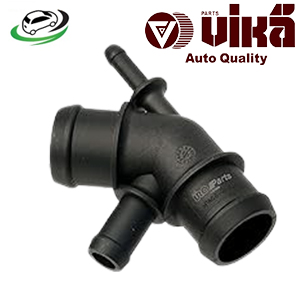-52%
Get Shaft Seal – Manual Transmission (40.0×21.9mmx8mm) VW Golf 2.0L 95/86/Jetta 2.0L/1.9L 20311113
The manual transmission shaft seal is a critical component in the operation of a vehicle’s manual transmission system. It ensures that the transmission fluid remains within the transmission case, preventing leaks that could lead to significant mechanical issues. This comprehensive guide explores the design, function, types, benefits, maintenance, and replacement of manual transmission shaft seals.
Design and Function
Design:
A manual transmission shaft seal, often referred to as an oil seal or input/output shaft seal, typically consists of the following components:
- Outer Shell: Made of metal, it provides structural support and is press-fitted into the transmission case.
- Sealing Lip: Made of rubber or a synthetic material, this lip creates a tight seal around the transmission shaft, preventing fluid leaks.
- Spring: A garter spring maintains tension on the sealing lip, ensuring continuous contact with the shaft.
- Dust Lip: Some seals have an additional dust lip to prevent external contaminants from entering the transmission.
Function:
The primary functions of a manual transmission shaft seal are:
- Preventing Fluid Leaks: The seal prevents transmission fluid from leaking out of the transmission case, ensuring proper lubrication and cooling of internal components.
- Maintaining Fluid Pressure: By keeping the fluid contained, the seal helps maintain the necessary pressure within the transmission system.
- Excluding Contaminants: The seal prevents dirt, dust, and other contaminants from entering the transmission, which could cause wear and damage to internal components.
Types of Manual Transmission Shaft Seals
1. Input Shaft Seal:
- Location: Found where the input shaft enters the transmission.
- Function: Seals the area around the input shaft to prevent fluid from leaking out of the transmission case.
2. Output Shaft Seal:
- Location: Located at the point where the output shaft exits the transmission.
- Function: Seals the area around the output shaft to prevent fluid leaks and keep contaminants out.
3. Shift Shaft Seal:
- Location: Situated around the shift shaft that connects to the gear shifter.
- Function: Seals the area around the shift shaft to prevent fluid leaks and maintain the cleanliness of the transmission fluid.
Benefits
1. Enhanced Transmission Performance:
- Optimal Lubrication: By preventing fluid leaks, the shaft seal ensures that the transmission fluid remains at the proper level, providing optimal lubrication to the gears and bearings.
- Maintained Fluid Pressure: Helps maintain the necessary fluid pressure for the smooth operation of the transmission.
2. Protection Against Contaminants:
- Sealing Out Dirt and Debris: Prevents external contaminants from entering the transmission, which can cause premature wear and damage to internal components.
- Prolonged Transmission Life: By keeping the transmission fluid clean and preventing leaks, the seal helps extend the lifespan of the transmission.
3. Prevention of Fluid Loss:
- Avoiding Fluid Leaks: A properly functioning seal prevents fluid from leaking out, avoiding the need for frequent top-ups and reducing the risk of running the transmission with low fluid levels.
- Cost Savings: Preventing fluid leaks can save money on transmission fluid and reduce the risk of costly repairs due to transmission damage.
Maintenance and Troubleshooting
1. Regular Inspection:
- Visual Inspection: Regularly inspect the area around the input, output, and shift shafts for signs of fluid leaks. Look for wet spots, drips, or puddles under the vehicle.
- Seal Condition: Check the condition of the seals for signs of wear, cracking, or hardening. Replace any seals that appear damaged.
2. Symptoms of a Worn Shaft Seal:
- Fluid Leaks: Visible fluid leaks around the transmission area are the most obvious sign of a worn or damaged shaft seal.
- Low Fluid Levels: Frequently needing to add transmission fluid can indicate a leak.
- Contaminated Fluid: If dirt or debris enters the transmission due to a faulty seal, the fluid may appear dirty or gritty.
- Transmission Noise: A low fluid level due to a leak can cause the transmission to make unusual noises, such as whining or grinding.
3. Replacement Procedure:
- Preparation: Gather the necessary tools and replacement seals. Ensure you have the correct seals for your specific transmission model.
- Drain the Fluid: Begin by draining the transmission fluid to prevent spills when removing the old seal.
- Remove the Old Seal: Use a seal puller or a similar tool to carefully remove the old seal without damaging the shaft or transmission case.
- Install the New Seal: Clean the sealing surface and lightly lubricate the new seal. Press it into place, ensuring it is seated evenly and securely.
- Refill the Fluid: Refill the transmission with the appropriate type and amount of fluid specified by the manufacturer.
- Test for Leaks: After installation, check for leaks by running the engine and inspecting the seal area for any signs of fluid seepage.
4. Professional Inspection:
- Mechanic Inspection: If you suspect a problem with a shaft seal, have a professional mechanic inspect it. They can accurately diagnose the issue and ensure proper replacement.
- Alignment Check: Ensure the alignment of the transmission shafts is correct, as misalignment can cause premature seal wear.
Seasonal Considerations
1. Winter:
- Cold Weather Effects: Cold temperatures can cause rubber seals to harden and become less effective. Regularly inspect the seals during winter months and replace them if necessary.
- Road Salt and Debris: In areas where road salt is used, inspect the seals for signs of corrosion and damage caused by salt and debris.
2. Summer:
- Heat Exposure: High temperatures can accelerate the wear of rubber seals. Regularly inspect the seals during summer months, especially in hot climates.
- Increased Stress: Long drives and heavy loads during summer travel can put additional stress on transmission seals, making regular inspection and maintenance crucial.
- Follow us on Facebook for more parts.



